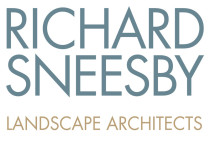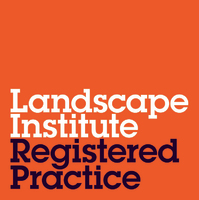
Budgeting for planting
If your budget is limited or you want to maximise the immediate impact of any changes to your garden then favour a scheme based around plants over built elements. With clever design and plant selections you can develop structure to your garden, give it year-round excitement and even enjoy bringing the fruits of your labour into the kitchen.
Maximising your investment
Start with the principle that whatever you do must not fail. Plants must thrive and everything must work hard to justify its inclusion. Critically, you must have a complete understanding of your site. Spend time getting to know your soil, aspect, sun, shade, levels of exposure, and whether the site is well or poorly drained. What plants are already in your garden? Are they healthy, do they make a positive contribution to the garden now and will they continue to do so in the future? Be decisive about whether they can stay or if they must be removed.
A clear vision and strategy
Plan and visualise your new garden based around principles of use and composition. List characteristics that are most important: Structure, privacy, colour, texture, source of food, attractiveness to wildlife and so on. Establish a colour palette and keep it limited to unify the space. Will your garden be formal and maintained to preserve a particular look, or can it be allowed to develop in a looser, more naturalistic way?
Now draft a list of plants that will not fail in your conditions. Remember that we are talking about creating impact and so you will be looking for plants which most effectively, and probably quickly, achieve your vision. For structure and layout, spend money on larger hedging, trees and shrubs. For a colour-based scheme invest most of your money in perennial herbaceous plants and bulbs. Stick to your selection strategy. Few things are more distracting than searching the web or books to select a list of just 20 plants.
Favour plants that will work hard for their place in your garden. Trees with stunning spring blossom and riots of autumn colour such as Crataegus prunifolia, Prunus serrula, Malus floribunda, Cercis siliquastrum or any of the more ornamental Sorbus or Acer genera are good choices. Similarly with shrubs, go for species and cultivars that will work throughout the year. Most of the following genera fall into this category Amelanchier, Cornus, Mahonia, Viburnum, Euonymus and, obviously roses.
Your composition will largely dictate your choice of perennials. Rarely will you need more than 10 key species/cultivars to achieve your composition. You can add bulbs to extend the flowering season and use short-lived annuals to fill gaps as the beds establish. Because the range will be limited, spend time sourcing the best available and don’t be afraid to buy all of the stock from your local independent nursery if they look like strong healthy plants. Geranium, Heuchera, Helleborus, Euphorbia, Cimicifuga, Achillea, Hemerocallis, Verbena, and Salvia are all genera which make a big contribution. Ornamental grasses will give height and movement so long as there will be no competition from weeds. Bulbs will give you impact when the garden is more dormant and while you wait for young plants to establish.
Perhaps the best value, if it fits your vision, are plants you can eat. Soft fruit, vegetables and salad crops can be beautifully organised in a kitchen garden area, but can also be slotted in elsewhere, especially architectural vegetables such as artichoke, ornamental kale, red orach and Swiss chard. Culinary herbs are another great addition. Fruiting shrubs, fruit trees and even more unusual trees such as fig, quince, medlar and mulberry have extraordinary fruits and striking foliage.
Costs Vs impact
For recreational areas the cheapest way to cover your site is to use a simple multi-purpose lawn mix or, for more money a good quality lawn turf. Don’t skimp on this - rougher turf is much cheaper but it can look terrible and is difficult to mow. A proper native wild flower meadow is very difficult to achieve and will fail very quickly unless you can find room in the budget to source seed suited to your local conditions. So, unless you really need high ecological credentials, opt for one of the pictorial-type meadows with selections chosen to thrive in more fertile garden soils.
Perennial and mixed perennial/shrub borders need careful planning based upon eventual height and spread. Don’t spend money crowding the beds. Let them grow and supplement in the first year or so with bulbs and even vegetables which can supress weeds and give you food for the table. Buy larger perennials and border shrubs at 2L or 3L sizes and give them space. Smaller ground covering species can be planted more densely using smaller, excellent value, 9cm pot sizes.
If you want a more natural and ecological approach, go for native and semi-native mass tree and shrub woodland-type planting, using native bare root transplants.
Height and structure
Finally, you’ll want some height and for immediate impact choose trees at least 4-5 years, even better if they are over 8 years old. Hedging plants are very cheap, but you’ll need larger plants close together unless you can wait. And remember that, if your choice is available bare root, planting in the dormant season (November-March) is much cheaper.
|
Budget costs (materials only) |
|
|
Seeded lawn |
£0.50/m² |
|
Turf lawn |
£5.00/m² |
|
Pictorial meadow |
£1.00/m² |
|
Seeded flower borders |
£1.00/m² |
|
Herbaceous borders using 9cm pots @5/m² |
£10-12.00/m² |
|
Herbaceous borders using 2L plants @3/m² |
£10.00/m² |
|
Herbaceous borders using 3L container @3/m² |
£15.00/m² |
|
Mixed herbaceous borders with range of sizes and quick impact |
£20.00/m² |
|
Shrub borders using 3-5L plants @2/m² |
£15.00/m² |
|
Native woodland, 2 year old transplants @ 1.5/m² |
£2.00/m² |
|
Young feathered trees |
From £15.00 |
|
Larger standard trees |
From £35.00 |
|
Specimen trees |
From £50 |
|
Hedging (2 year-old transplants @ 750mm centres) |
£2/m |
|
Semi-mature native hedging (5-6 year old plants) |
£90-100/m |
Contact us
Richard Sneesby
Retallack Farm
Constantine
Falmouth
Cornwall
TR11 5PW
07720 590533
01326 341430
Alternatively please use our contact form.
Read our reviews on Houzz



